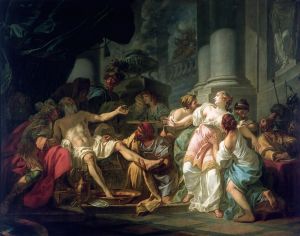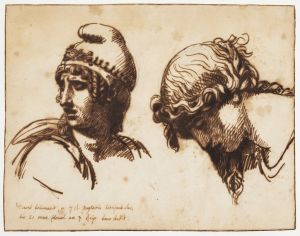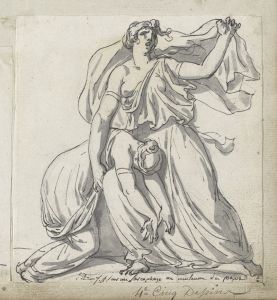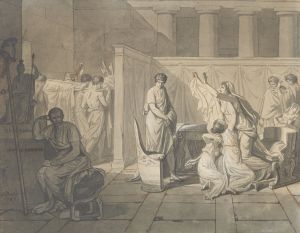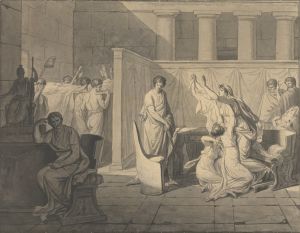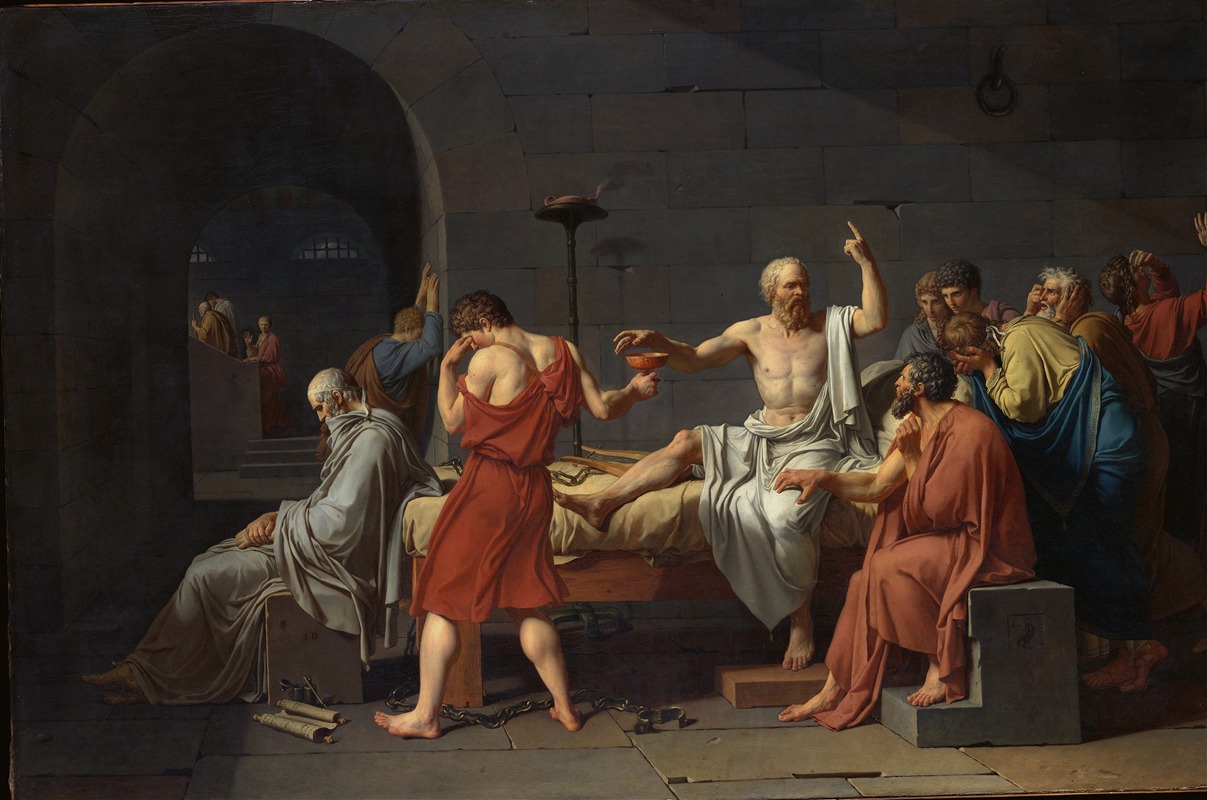
The Death of Socrates
A hand-painted replica of Jacques Louis David’s masterpiece The Death of Socrates, meticulously crafted by professional artists to capture the true essence of the original. Each piece is created with museum-quality canvas and rare mineral pigments, carefully painted by experienced artists with delicate brushstrokes and rich, layered colors to perfectly recreate the texture of the original artwork. Unlike machine-printed reproductions, this hand-painted version brings the painting to life, infused with the artist’s emotions and skill in every stroke. Whether for personal collection or home decoration, it instantly elevates the artistic atmosphere of any space.
The Death of Socrates is a neoclassical painting created in 1787 by the French artist Jacques-Louis David. The artwork is widely regarded as one of David's masterpieces and a significant example of the neoclassical style, which emphasizes clarity, order, and classical themes. The painting is currently housed in the Metropolitan Museum of Art in New York City.
The painting depicts the final moments of the ancient Greek philosopher Socrates, who was sentenced to death by drinking hemlock in 399 BCE. Socrates was condemned by the Athenian court on charges of corrupting the youth and impiety, specifically for allegedly introducing new deities and failing to honor the traditional gods of Athens. Rather than fleeing into exile, Socrates chose to accept his punishment, adhering to his principles and belief in the rule of law.
David's composition is based on an episode described in Plato's Phaedo, a dialogue that recounts Socrates' last hours as witnessed by his disciples. In the painting, Socrates is shown seated on a bed, reaching for the cup of hemlock with one hand while gesturing upward with the other, symbolizing his unwavering commitment to his philosophical ideals and belief in the immortality of the soul. His calm demeanor contrasts with the emotional reactions of his followers, who are depicted in various states of grief and despair.
The central figure of Socrates is illuminated, drawing the viewer's attention to his stoic expression and idealized physique, which reflect the neoclassical emphasis on heroism and moral virtue. The other figures in the scene, including Plato, who is seated at the foot of the bed, and Crito, who is holding Socrates' leg, are arranged in a carefully balanced composition that underscores the gravity of the moment. The use of strong lines, muted colors, and dramatic lighting further enhances the painting's emotional impact and sense of timelessness.
David's The Death of Socrates was commissioned by Charles-Michel Trudaine de la Sablière, a French magistrate and art patron. The painting was completed during a period of political and intellectual ferment in France, just two years before the outbreak of the French Revolution. Its themes of sacrifice, justice, and the pursuit of truth resonated deeply with contemporary audiences and contributed to its enduring legacy.
The painting is celebrated not only for its technical mastery but also for its ability to convey complex philosophical and moral ideas through visual art. It remains an iconic representation of Socrates' life and teachings, as well as a testament to Jacques-Louis David's skill as a painter and storyteller.






